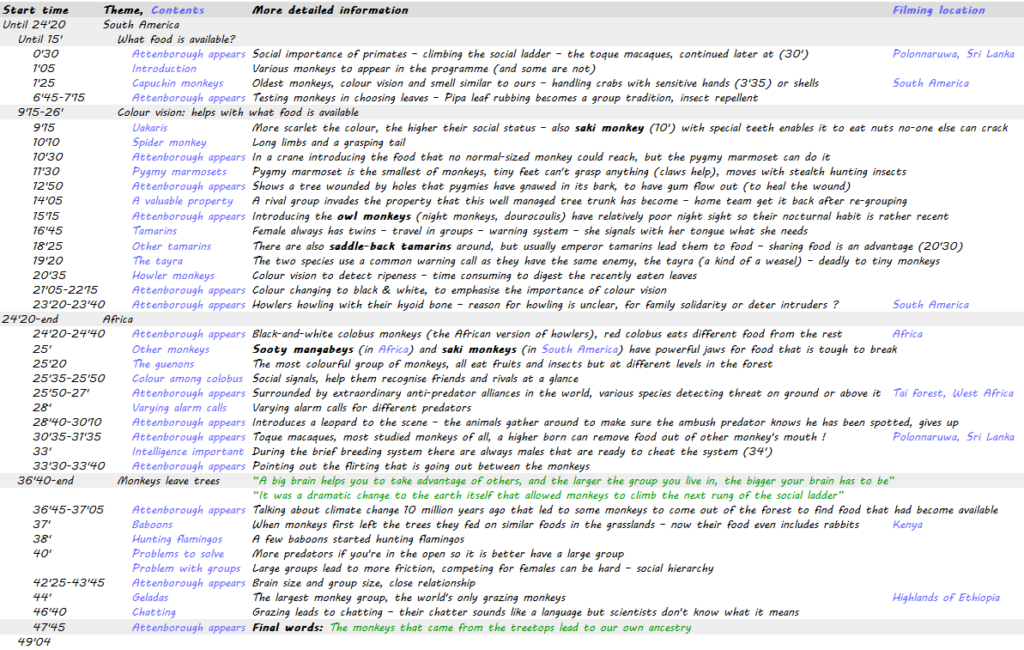Original air date: 29 January 2003

Above is a graphical presentation of the episode, a more detailed text version of the timeline is below

Selected material
The benefit of seeing in colour

It is hard to manage in the trees if you feed on leaves. Those not ripe enough to be eaten are poisonous and have a certain colour. Those ripe have a different colour but they are tough to eat. In between there is a stage that is not too poisonous but also not too tough to be eaten. To pick them colour vision is vital.
Most colourful monkeys

The guenons are the most colourful of monkeys. They use their colours to serve as social signals to be able to tell friends and rivals apart.
Brain size as an indication of group size

Attenborough showing how brain size (red lumps) of various monkeys indicates the group size in which they live: The smallest (furthest left) is the solitary bush baby, next is a colobus (group size 15), guenon (group size 25) and the largest is baboon (group size 50).
Final words (in full): “Their [geladas] chatter sounds like a language, but we have no idea what sort of information they’re exchanging. One thing, however, is likely – the need to communicate detailed social information between many individuals led to the evolution of language in our own species. So although monkeys living in the tree tops have rich and varied lives, it’s the ones that came down and formed large groups that have the most complex and communicative societies. A fact not without significance for our own ancestry.”